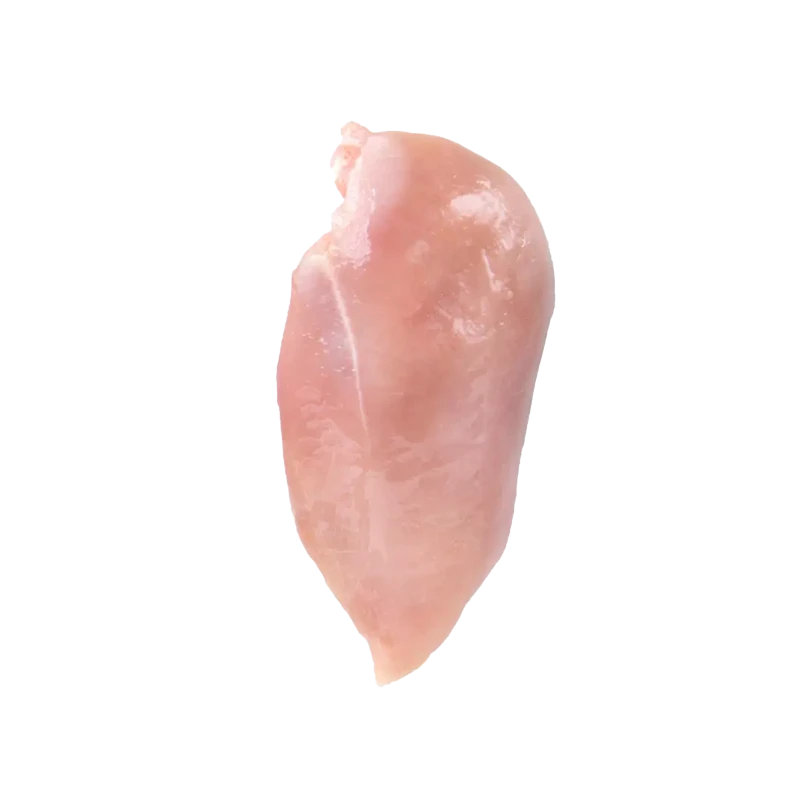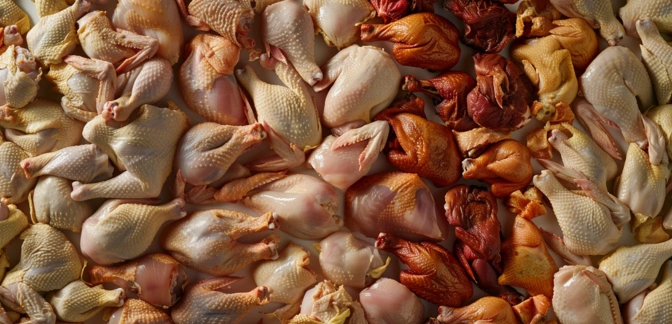Chicken Breast — Nutrients, Health Benefits, And Shopping Tips

Written by Listonic Team
Last update on September 4, 2024
Chicken breast nutrients
Nutrition facts
Amount per 100 g
Calories
🔥 165 kcal
| Nutrition per: 100 g | Value | % Daily Value* |
|---|---|---|
| Carbs | 0 g | - |
| Fiber | 0 g | - |
| Sugars | 0 g | - |
| Glycemic Index | 0 | - |
| Protein | 31 g | 62% |
| Sodium | 74 mg | 3.22% |
| Total Fat | 4 g | 5.13% |
*The % of Daily Value (DV) tells you how much a nutrient in a serving of food contributes to a daily diet. 2,000 calories a day is used for general nutrition advice.
31 g
💪 High Protein Content
Chicken breast facts & tips
Health benefits
- High in protein, essential for muscle growth, repair, and overall body function.
- Low in fat, making it a lean source of protein that supports heart health and weight management.
- Contains essential vitamins and minerals such as Vitamin B6, B12, niacin, and selenium, supporting overall health and well-being.
- Versatile and easy to prepare, making it a convenient addition to a balanced diet.
Health risks
- Risk of contamination with harmful bacteria such as Salmonella or Campylobacter, particularly if the chicken breast is not properly cooked or stored.
- Potential for dryness if overcooked, which may lead to the addition of high-calorie sauces or gravies to improve texture, potentially increasing calorie intake.
- High sodium content in pre-seasoned or processed chicken breasts, which can contribute to hypertension and increased cardiovascular risks.
- Potential for overconsumption due to its lean nature, leading to excessive intake of calories or sodium if processed or pre-seasoned products are used.
How to choose chicken breast
Chicken breasts should be plump and have a pale pink color, with a smooth, firm texture. The skin, if present, should be intact and not overly fatty, providing a protective layer that helps retain moisture during cooking.
Avoid chicken breasts that have a grayish tint or feel sticky to the touch, as these are signs the meat is not fresh. Breasts with a sour smell or visible signs of spoilage should also be avoided, as they are not suitable for consumption.

How to store chicken breast
Fresh chicken breast should be stored in the refrigerator, tightly wrapped in plastic wrap or butcher paper. Refrigeration maintains its freshness for up to two days. For longer storage, consider freezing.
Air exposure can cause chicken breast to spoil quickly. Avoid leaving it uncovered, and always thaw frozen chicken in the refrigerator to prevent bacterial growth. Proper handling and storage ensure safety and quality.
✅ Extra Tip
How long does it last?
Chicken breast can last for 1-2 days in the refrigerator. For longer storage, chicken breast can be frozen for up to 9 months.
What to do with leftovers?
Leftover chicken breast can be used in a variety of savory and healthy dishes. Slice it thinly and add to sandwiches, wraps, or salads for a lean and flavorful protein, or chop it up and mix into a stir-fry with vegetables and rice. Chicken breast is also great when added to pasta dishes with a creamy or tomato-based sauce, or used as a topping for pizzas or flatbreads.
Use chicken breast in a casserole with potatoes, vegetables, and cheese, or mix it into a stew or soup for added flavor and richness. If you have a lot of chicken breast, consider making a batch of chicken pot pie with a flaky crust, or using it as a filling for tacos, burritos, or quesadillas. Chicken breast can also be sliced and served over a grain bowl with quinoa, roasted vegetables, and a tangy dressing. For a quick snack, reheat chicken breast slices and serve with a dipping sauce or on a bed of greens.
👨⚕️️ Medical disclaimer
Discover products from other categories
Listonic Team
Fact-checked
Our editorial team checked this article to make sure it was accurate at the time of publishing it.
Get the top-rated shopping list app

chicken breast
1 piece
Outline







